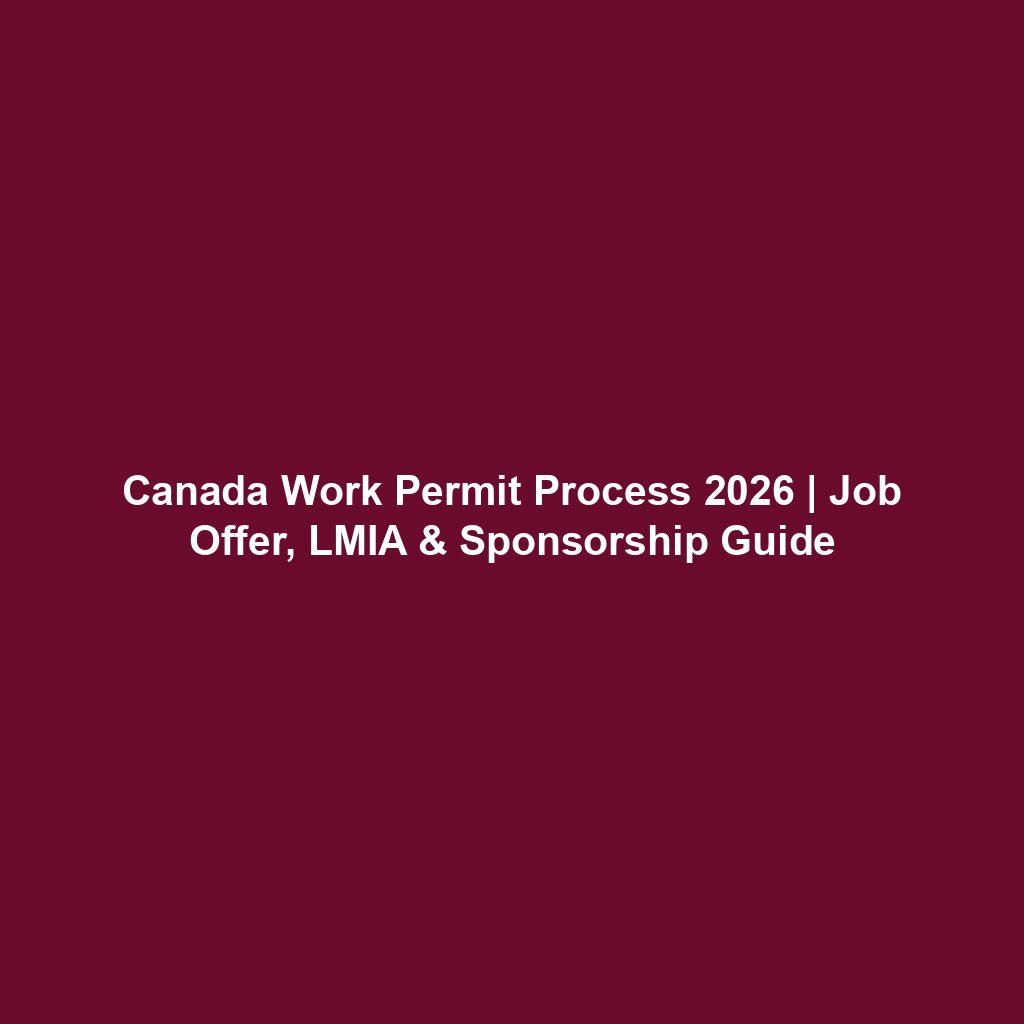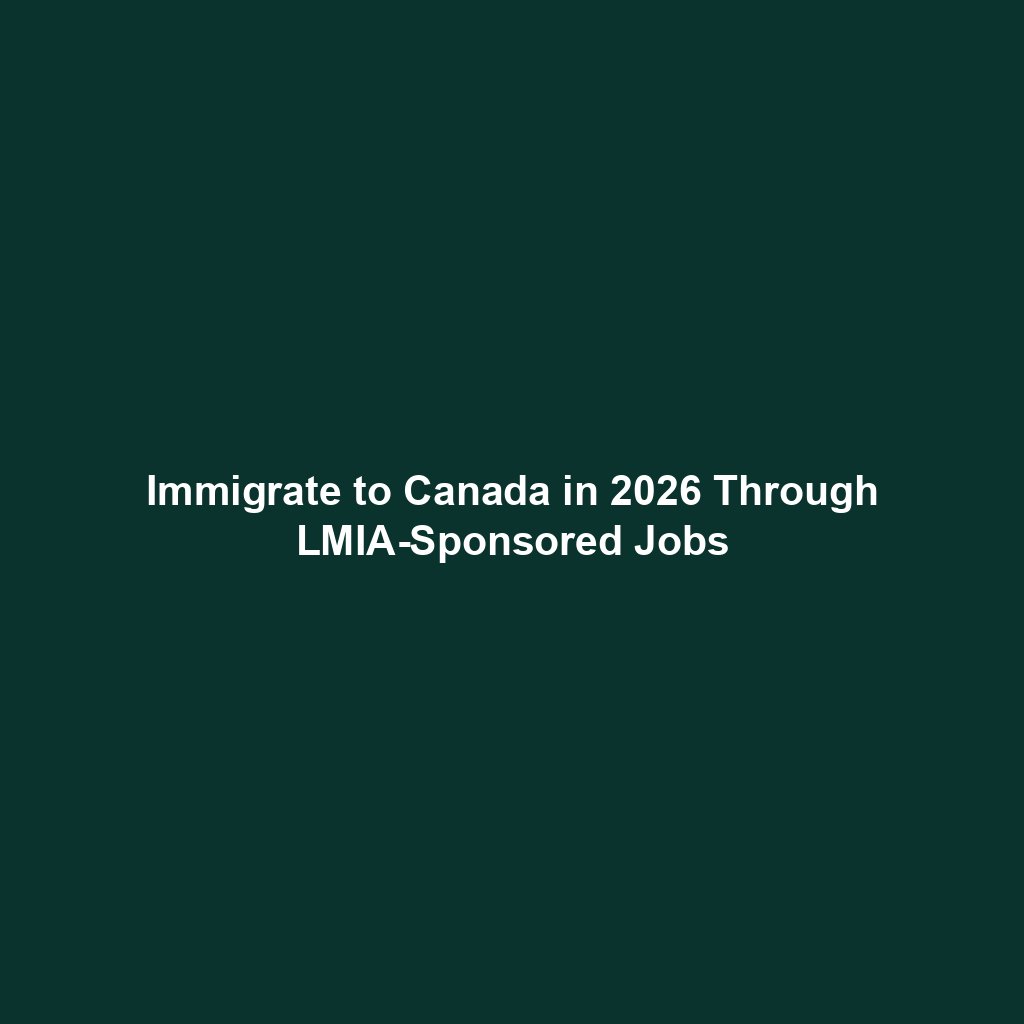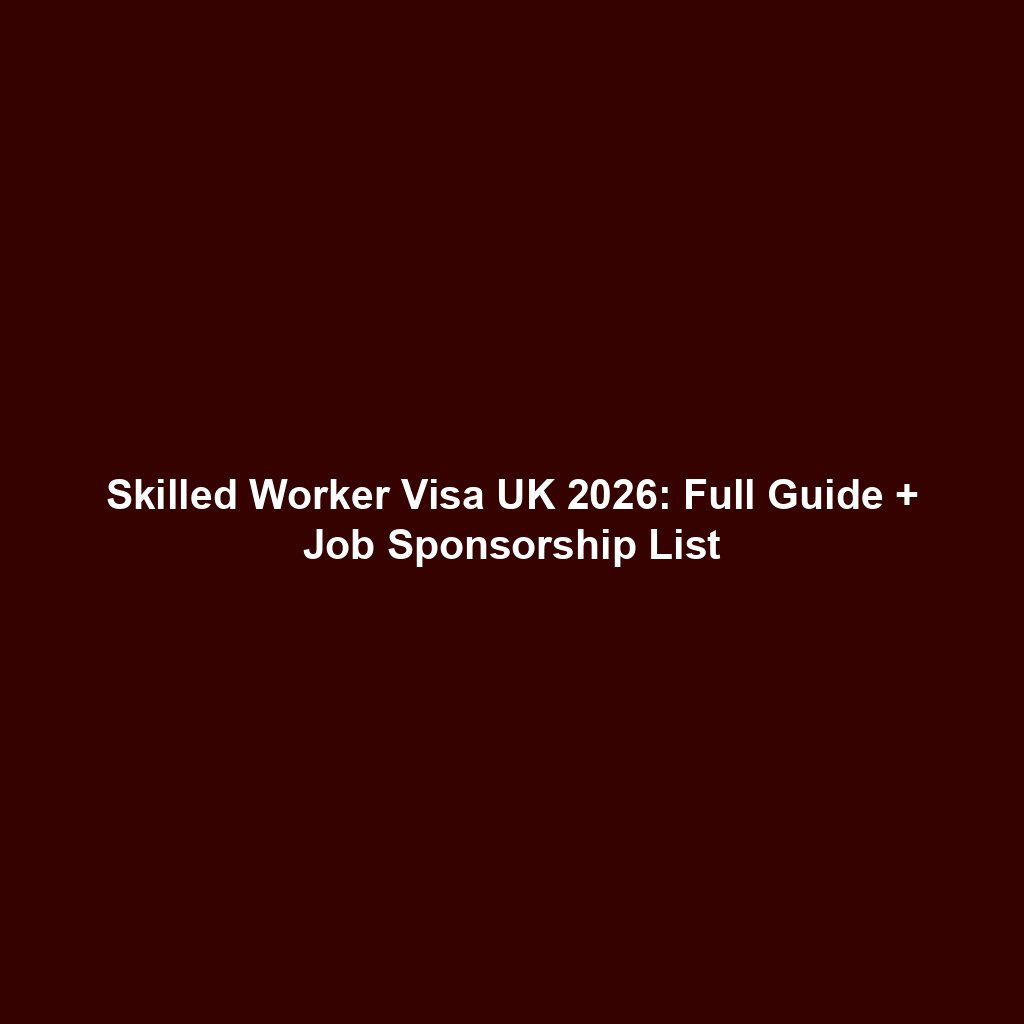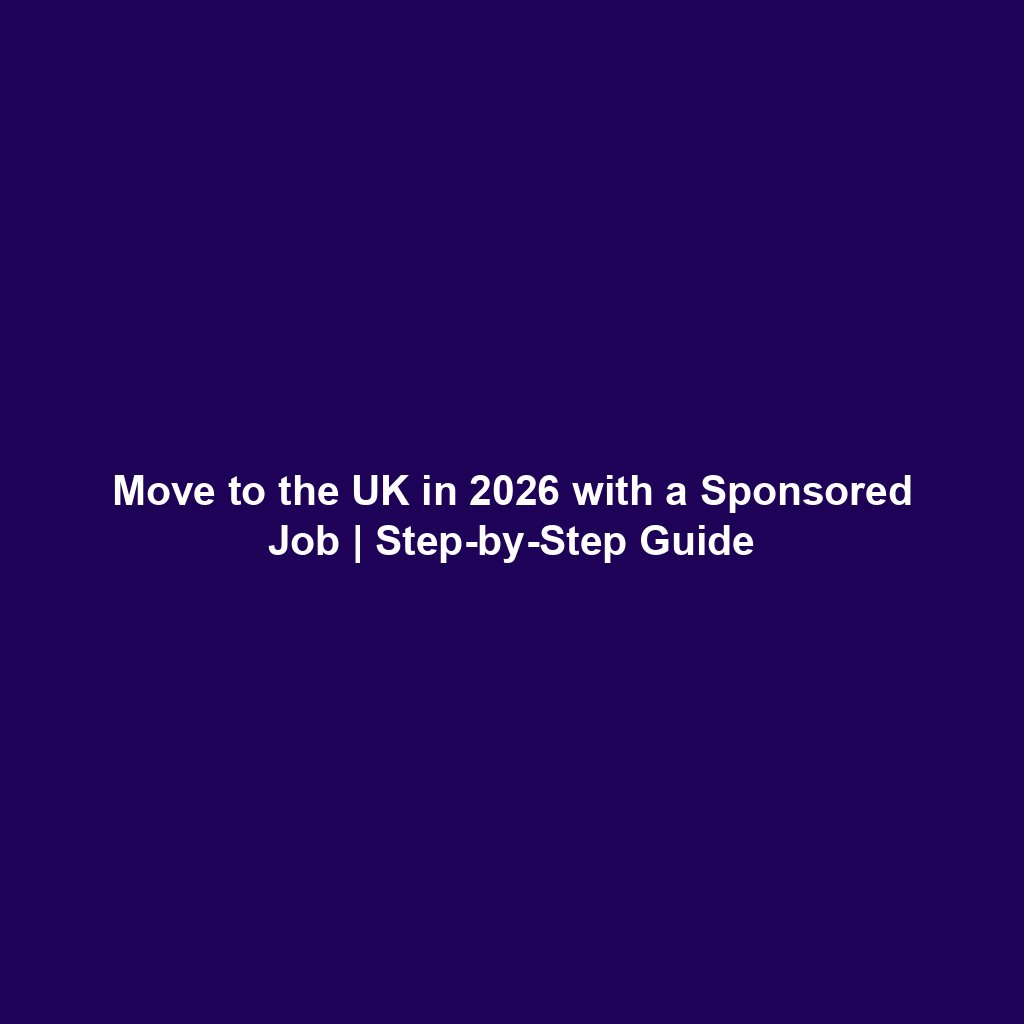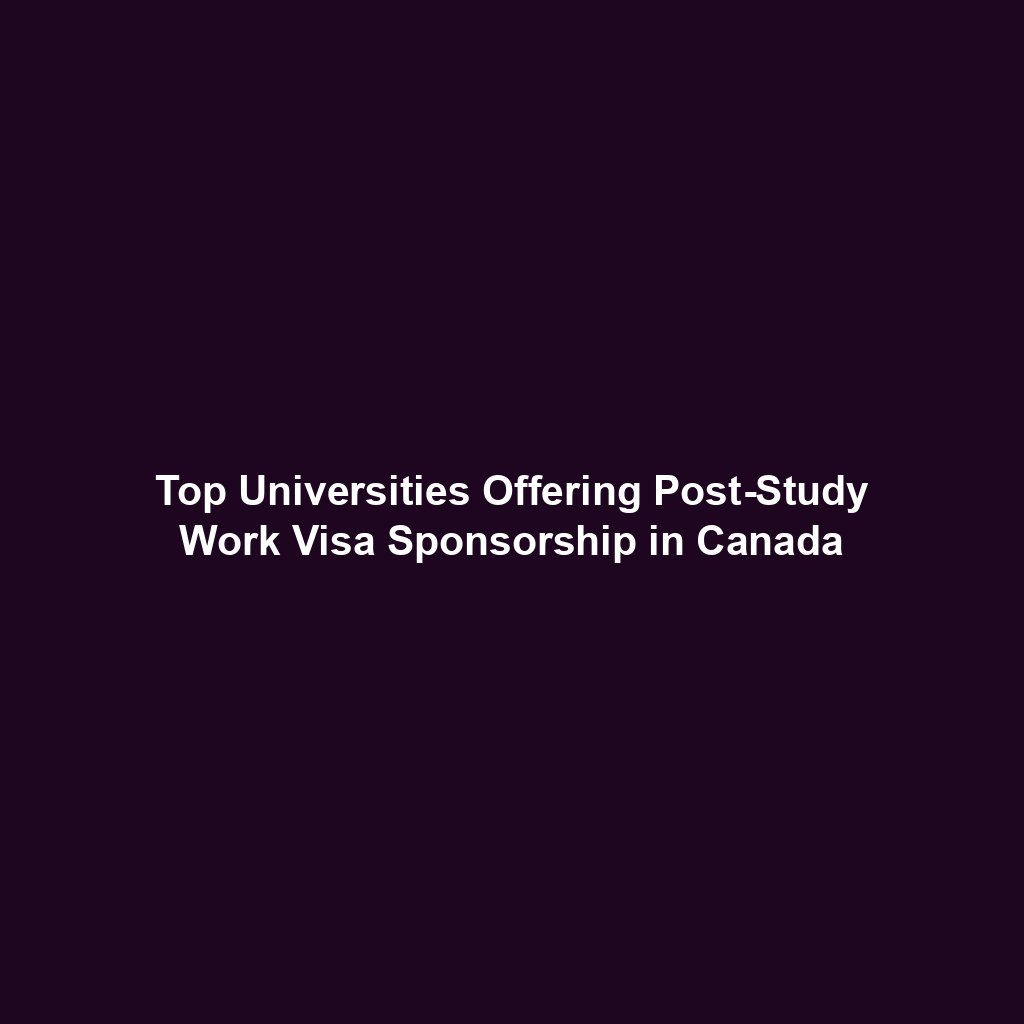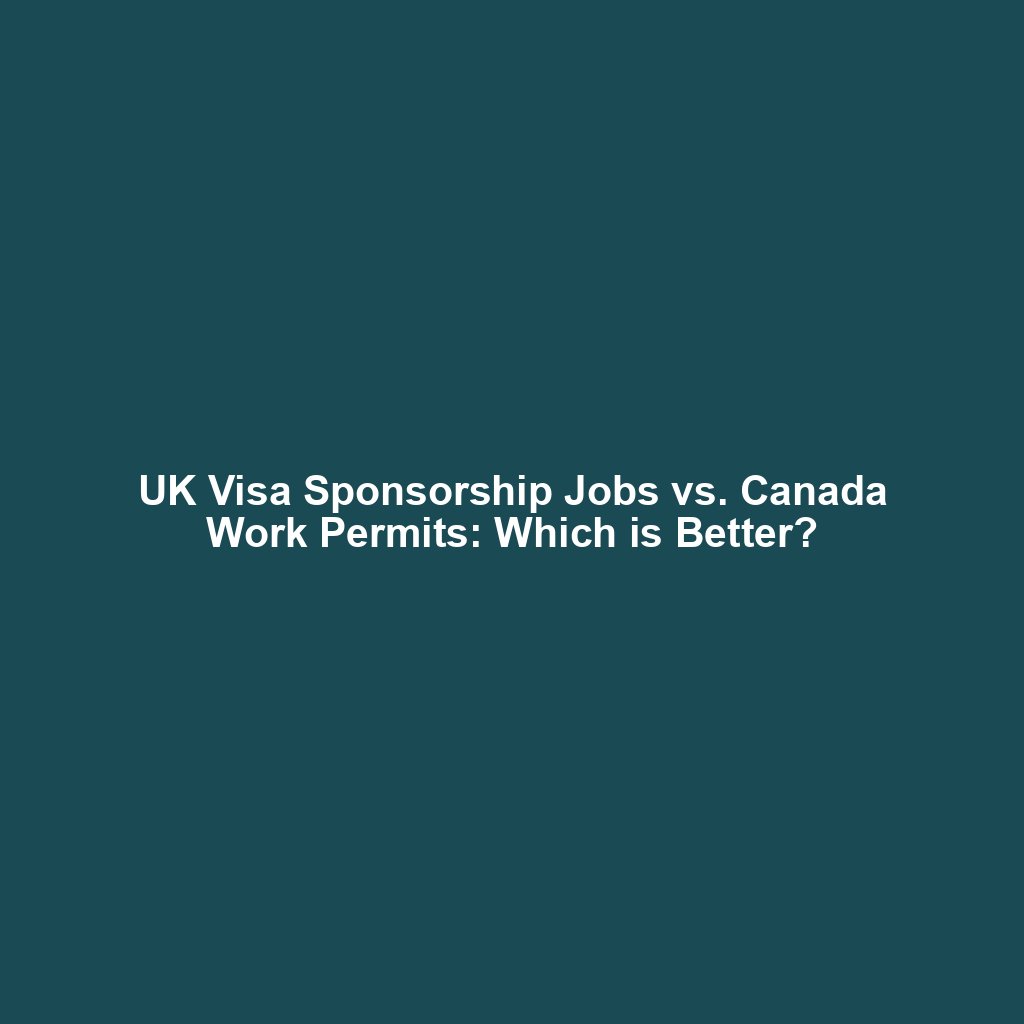Planning to work in Canada in 2026? Learn the full Canada work permit process, including job offer requirements, LMIA, visa sponsorship, and step-by-step application guide for foreign workers.
Canada remains one of the most attractive destinations for foreign workers seeking better job opportunities, higher income, and an improved quality of life. With labour shortages across several sectors, the Canadian government continues to welcome thousands of skilled and unskilled workers each year through different work permit programs.
Whether you’re planning to apply for a temporary job, skilled position, or even an unskilled role, understanding the Canada work permit process in 2026 is crucial. This includes knowing how to get a valid job offer, understanding the Labour Market Impact Assessment (LMIA) requirement, and how visa sponsorship plays into the overall immigration process.
This blog post will break down each part of the application journey and walk you through how to apply, what documents are needed, and how to increase your chances of being approved. If you’re ready to kick-start your Canadian dream, read on!
Key Highlights
- 🇨🇦 Work permits are required for most foreign nationals planning to work in Canada in 2026.
- 📝 A valid job offer is usually the first step, followed by LMIA approval (if required).
- 💼 Many employers offer visa sponsorship, especially under the Temporary Foreign Worker Program (TFWP).
- 📌 There are open work permits and employer-specific work permits, depending on your situation.
- ✅ Successful work experience in Canada can lead to permanent residency through programs like Express Entry or PNP.
Understanding Canada’s Work Permit System
In Canada, a work permit is a legal document that allows a foreign national to work for a specific employer or in a specific occupation. There are two main types:
1. Employer-Specific Work Permit
This type of permit allows you to work only for the employer who has made a job offer. You’ll need:
- A job offer letter
- An LMIA number or an LMIA-exempt offer
- The name and address of your employer
2. Open Work Permit
This is not job-specific and does not require an LMIA or job offer. It is typically available to:
- Spouses of skilled workers or international students
- Refugee claimants
- International graduates under specific programs
Most foreign workers apply for employer-specific permits, especially under the Temporary Foreign Worker Program (TFWP) or International Mobility Program (IMP).
Step-by-Step: Canada Work Permit Process 2026
Step 1: Get a Valid Job Offer
To begin, you must find a Canadian employer willing to hire a foreign worker. The job must meet Canadian labor standards and be full-time or permanent in most cases.
Employers must provide:
- A written job offer letter
- A detailed employment contract
- Information about the job title, duties, salary, location, and duration
Where to Find Jobs in Canada:
Step 2: Employer Applies for LMIA (If Required)
The Labour Market Impact Assessment (LMIA) is a document that proves no Canadian citizen or permanent resident is available to do the job.
Employers must apply through Employment and Social Development Canada (ESDC). If approved, they receive a positive LMIA, and you can then apply for a work permit using this document.
Some categories are LMIA-exempt, such as:
- Intra-company transfers
- Jobs under international agreements (e.g., CUSMA)
- French-speaking skilled workers outside Quebec
- Charitable or religious work
📍 LMIA Info: Canada.ca – LMIA Process
Step 3: Gather Your Documents
Before you apply, make sure you have the following:
- Job offer letter & LMIA (or LMIA-exempt offer)
- Valid passport
- Proof of qualifications (CV/resume, work history)
- Police clearance certificate
- Medical exam results (if required)
- Proof of funds (for temporary permits, depending on job type)
- Photos as per Canadian requirements
- Language test results (for certain streams or PR pathways later)
Step 4: Apply for the Work Permit
You can apply online through the IRCC portal or at your local Visa Application Centre (VAC).
- Application fee: CAD $155
- Biometrics fee: CAD $85
- Processing time: 8–12 weeks (varies by country and job stream)
📍 Apply Here: Canada IRCC Work Permit Application
Step 5: Biometrics, Medical, and Interview (if required)
Once your application is submitted, you may be asked to:
- Visit a Visa Application Centre (VAC) for fingerprints and biometrics
- Attend a medical exam with an approved panel physician
- Participate in an interview with an immigration officer
After completing these, you’ll wait for a final decision.
Step 6: Receive Work Permit and Travel to Canada
If approved, you’ll receive:
- A Port of Entry (POE) Letter of Introduction
- A temporary resident visa (if needed)
You’ll present these documents to a border officer at a Canadian port of entry. The actual work permit will be issued on arrival.
Visa Sponsorship in Canada for 2026
Visa sponsorship refers to when a Canadian employer supports your work permit application by offering a job and securing the necessary LMIA.
Employers willing to sponsor must:
- Be registered in Canada
- Provide a legitimate, full-time job offer
- Cover the LMIA processing fee (CAD $1,000 per worker)
- Prove recruitment efforts were made to hire Canadians first
Industries where visa sponsorship is common:
- Agriculture
- Construction
- Hospitality
- Trucking and delivery
- Food processing
To find sponsored jobs, look for postings that mention:
✅ “LMIA approved”
✅ “Visa sponsorship available”
✅ “Foreign workers welcome”
Work Permit vs Permanent Residency (PR)
While a work permit is temporary, many programs lead to PR pathways, such as:
- Canadian Experience Class (CEC)
- Provincial Nominee Program (PNP)
- Atlantic Immigration Program (AIP)
- Agri-Food Pilot
After gaining at least one year of Canadian work experience, you may be eligible to apply for PR under Express Entry.
Conclusion: Why Now Is the Best Time to Apply
Canada’s work permit system in 2026 is more accessible than ever, especially for foreign nationals with job offers in high-demand industries. Whether you’re aiming for a temporary stay or a permanent move, starting with a work permit is the fastest and most reliable route to building a life in Canada.
From job offers and LMIA requirements to full visa sponsorship, this guide has shown you every step you need to take. The opportunities are real, and with thousands of job vacancies across the country, employers are actively looking for international talent like you.
👉 Don’t delay your future. Start searching for Canadian jobs and begin your application today!
FAQs
1. How long does it take to get a Canadian work permit in 2026?
It usually takes 8 to 12 weeks, but this depends on your home country, the type of job, and whether your employer already has an LMIA.
2. Can I apply for a work permit without a job offer?
Only under open work permit streams. Most foreign workers will need a valid job offer to apply for a work permit.
3. Is LMIA required for all jobs?
No. Some positions under International Mobility Programs are LMIA-exempt. However, most unskilled and semi-skilled jobs require LMIA.
4. Can I switch jobs while on a work permit?
If you hold an employer-specific permit, you must apply for a new work permit before changing jobs. Open work permits allow job flexibility.
5. Can I bring my family with me to Canada on a work permit?
Yes. Spouses and children may accompany you. In many cases, your spouse can apply for an open work permit, and your children can attend school.
